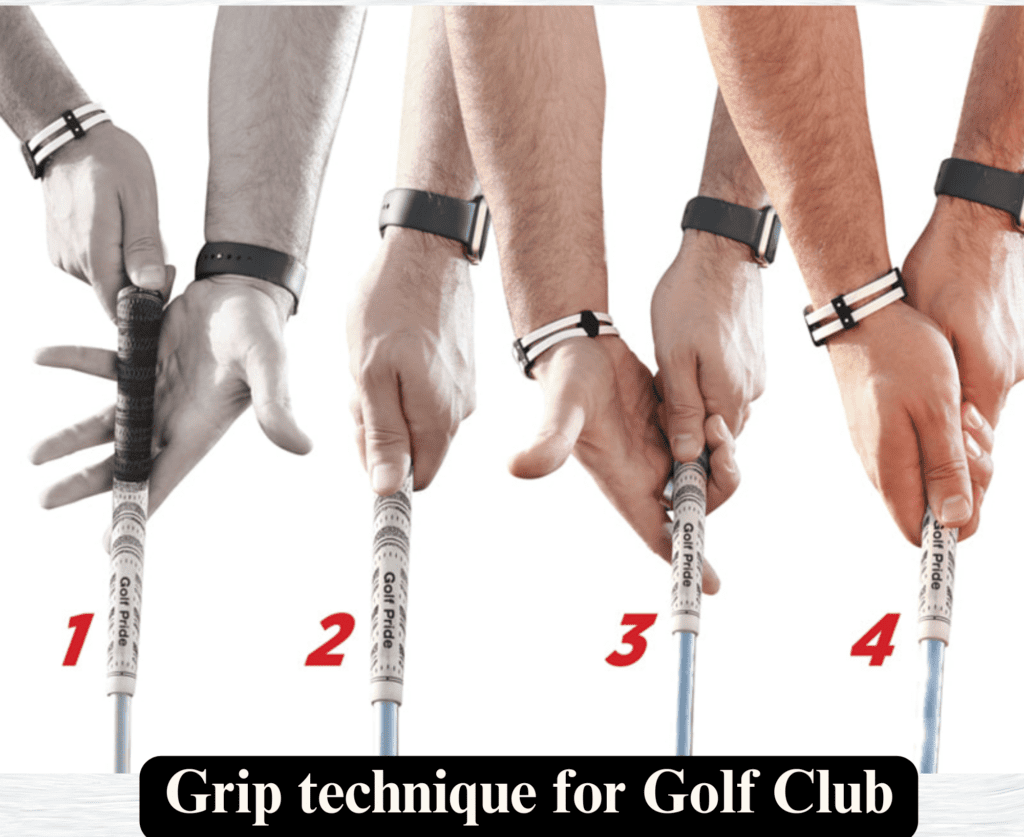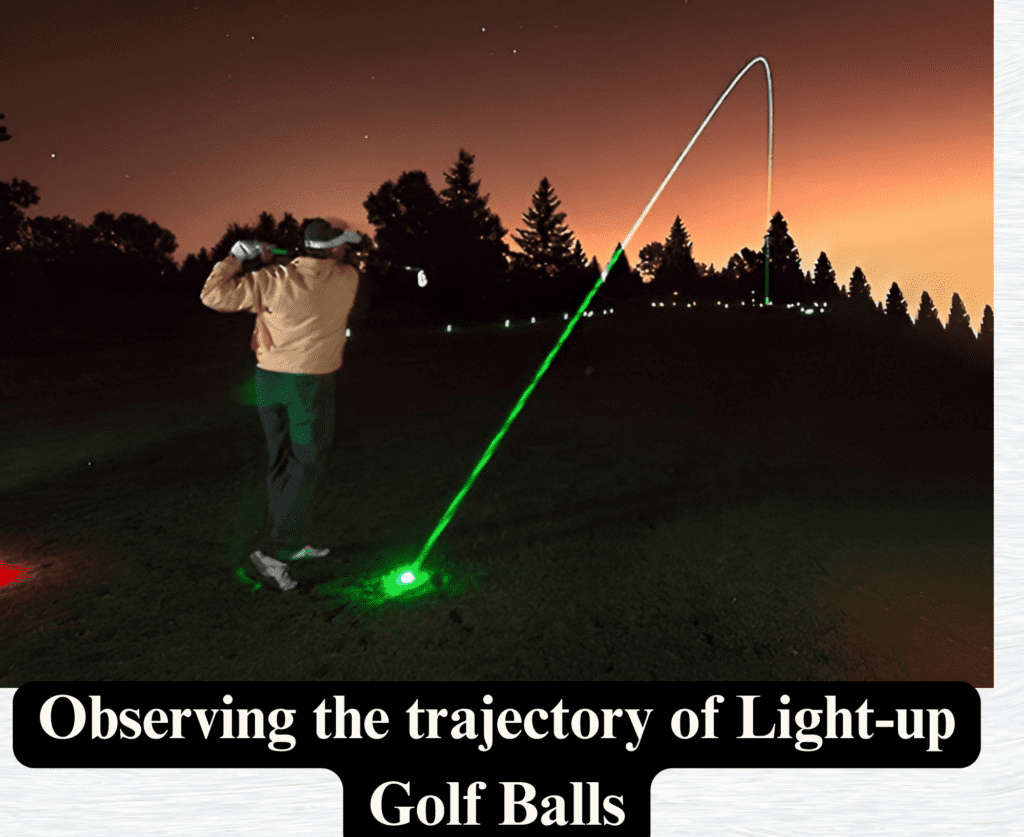Welcome to our comprehensive guide “Improve Swing with Light-Up Golf Balls”. Many tools and techniques have been employed to improve golf swing. Light-up golf balls have emerged as a unique and effective aid in refining your swing. This guide explores how these glowing golf balls can enhance your performance on the fairway. This guide will assist you in improving your swing. So, let’s explore the radiant world of light-up golf balls and their extraordinary benefits.
Improve swing with Light-up Golf Balls
Improving your golf swing with light-up golf balls can be a unique and effective way to enhance your performance. The visual feedback provided by the glowing trajectory of these balls allows you to focus on critical aspects of your swing and make necessary adjustments.
Case Studies: Improved Swings with Light-Up Golf Balls
Before we dive into the details, let’s explore some real-life success stories of golfers. These golfers have experienced remarkable improvements in their swings. These improvements are by incorporating light-up golf balls into their practice routines. These inspiring case studies will demonstrate the potential of this unique training tool.
Case Study 1: John’s Improved Accuracy
John Daly, a casual golfer, had always struggled to achieve consistent shooting accuracy. He could not overcome this challenge despite regular practice sessions at the driving range during the day. However, John significantly noticed an improvement in swing after adopting light-up golf balls. The glowing trajectory of the ball helped him visualize and adjust his swing path, resulting in more precise shots.
Case Study 2: Sarah’s Increased Distance
Sarah Kemp, wanted to add more distance to her drives. Despite her experience and expertise, she found it challenging to hit long shots consistently. After using light-up golf balls, Sarah noticed a significant increase in her driving distance. The bright illumination of the balls helped her focus on her swing speed and follow-through, resulting in more powerful shots.
Case Study 3: Mark’s Improved Tempo
Mark O’Meara, needed help maintaining a consistent tempo in his swing. He often rushed through his backswing and ended up with inconsistent shots. After incorporating light-up golf balls into practice , Mark has improved his swing rhythm and tempo. The glowing trajectory of the ball helped him slow down and execute smoother swings, resulting in more consistent shots.
Tips to improve the swing:
One of the most significant advantages of using light
1 Setting Up for Practice
To make the most of your nighttime practice sessions, setting up the right environment is crucial. This section will discuss critical considerations when choosing a practice area. These conditions include ideal lighting conditions for using light-up golf balls, and essential safety precautions to ensure a safe and enjoyable experience.
Choosing the Right Practice Area
Selecting the appropriate practice area is essential for effective night golf practice. We’ll explore factors such as space, terrain, and accessibility to help you find the perfect spot to hone your skills.
Ideal Lighting Conditions for Using Light-Up Golf Balls
Proper lighting is crucial when using light-up golf balls. We’ll discuss different lighting options and provide tips on creating optimal visibility for tracking the ball’s flight and analyzing your swing.
Basic Swing Techniques
The golf swing is a complex, coordinated movement that involves the entire body. Therefore, it is essential to master its fundamental techniques.
A solid grip sets the foundation for a successful swing. Golfers should hold the club with both hands. The stance and alignment play pivotal roles in creating a stable platform for the swing. A shoulder-width stance with proper alignment to the target ensures a balanced starting position. The posture should promote a straight back and a slight tilt forward from the hips, enabling a natural and unrestricted movement throughout the swing.
The golf swing sequence is a rhythmic flow from the backswing to the downswing and, finally, the follow-through. During the backswing, the shoulders turn, the hips coil and the wrists revolve around, creating potential energy.
The downswing involves a weight shift to the front foot, initiating a powerful and controlled release of that energy through impact. A well-executed follow-through completes the swing, with the club finishing high and around the body.
Grip and Stance Fundamentals
There are three options to choose from. For right-handers, your top hand will be your left hand, and your bottom is your right. Left-handers will have their right hand as their top hand and left as their bottom.
- Ten-finger grip – This involves holding the club with all ten fingers. Right-handed players will have their left hand on the top of the club. On the other hand, left-handed players will have their right hand on top of the club. The second hand will be placed below the top hand, heaving the index finger of your top hand and the pinky of your bottom hand touching. The thumb from your top hand should be placed on top of the grip, and it will be covered up by your bottom hand.
- Overlap grip- In an overlapping grip, unlike the Ten-finger grip, the pinky finger of your bottom hand will be placed on your top hand. Gripping the club with your top hand, put the pinky finger of your bottom hand in the crest of your index. You placed the middle fingers on your top hand. The rest of the grip will remain the same as the Ten-finger grip.
- Interlock grip – In it, you will interlock your pinky finger with the index finger of your top hand. Grip the club with your top hand’s thumb, pinky, ring, and middle fingers, and point your index finger up. Then, interlock your index finger with the pinky from your bottom hand.

Body Alignment for a Straight and Accurate Swing
Achieving proper alignment is crucial for consistent ball-striking. We’ll explain how to align your body with the target, ensuring a straight and accurate swing.
Importance of a Smooth and Controlled Backswing
The backswing sets the foundation for a powerful and controlled golf swing. We’ll break down the critical elements of a smooth and steady backswing. Besides, we will also provide drills to help you achieve a fluid and synchronized motion.
2 Analyzing Ball Flight
Observing the golf ball’s flight is essential for your swing and making necessary adjustments. In this section, we’ll discuss how to analyze the trajectory of light-up golf balls. Further, it also provides insights on adjusting your swing based on ball flight patterns.
Observing the Trajectory of Light-Up Golf Balls
Light-up golf balls visually represent your swing path and ball flight. We’ll guide you through observing and interpreting the trajectory of these unique balls to gain valuable insights into your swing mechanics.

Adjusting Swing Based on Ball Flight
Understanding how different swing factors affect the ball’s flight is critical to improving consistency and accuracy. We’ll explore common ball flight patterns and provide tips on adjusting your swing to correct any issues.
3 Focus on Tempo and Rhythm
Finding the right tempo involves a harmonious balance between the backswing and downswing. It ensures that the transition is smooth and controlled.
Rhythm, on the other hand, sums up the tempo of the entire swing, from the initiation to the follow-through. Maintaining a consistent tempo and rhythm allows for a more predictable and repeatable motion. Hence it promotes accuracy and control in every stroke. Golfers often discover that a good sense of tempo improves the mechanics of their swing.
4 Targeted Drills for Swing Improvement
Alignment drills with light-up targets:
Master your alignment and setup by incorporating light-up targets into your practice routine. It ensures proper positioning for a successful swing.
Distance control exercises with varied ball flights:
Develop better control over your shots by practicing with light-up golf balls that simulate different flight patterns. It allows you to fine-tune your distance control.
Incorporating challenges for skill enhancement:
Discover engaging practice drills that incorporate light-up golf balls, challenging you to improve your swing mechanics and overall performance.
5 Video Analysis with Light-Up Golf Balls
Recording and reviewing your swing using technology:
Explore the benefits of recording your swing with light-up golf balls, enabling you to analyze your technique and identify areas for improvement.
Identifying areas for improvement through playback:
Learn how to review your swing videos, focusing on critical elements such as posture, grip, and alignment to identify areas that need adjustment.
Seeking professional advice based on video analysis:
Consider seeking guidance from golf professionals who can provide valuable insights based on the analysis of your swing videos.
6 Progressive Practice Sessions
Gradually increasing difficulty and complexity:
Develop your skills progressively by incorporating more challenging drills and exercises, allowing continuous improvement.
Tracking progress over time:
Keep a record of your practice sessions and monitor your progress as you refine your swing mechanics and achieve your goals.
Customizing practice sessions based on weaknesses:
Tailor your sessions to address specific weaknesses in your swing, focusing on areas requiring extra attention and improvement.
Conclusion:
In a nutshell, this guide focuses on the importance of light-up golf balls. It also highlights the real-life success stories that positively change the golfer’s game. This guide ended up with a suggestion of progressive practice sessions to enhance swing with light-up golf balls.
Frequently Asked Questions
Q: What are light-up golf balls?
Light-up golf balls are specially designed balls that contain LED lights inside. These lights are activated upon impact. They illuminate the ball and make it visible even in low-light conditions. This feature allows golfers to play night golf or practice their swing after sunset.
Q: How can light-up golf balls help improve my golf swing?
Light-up golf balls provide several benefits for golfers looking to improve their swing:
- Visualization: The illuminated path of the ball enables you to see the trajectory and flight of your shots more clearly. This visual feedback can help you adjust your swing mechanics and improve your overall technique.
- Focus and Alignment: The bright light the ball emits helps you maintain focus and alignment during night practice sessions. You can develop better accuracy and precision in your swings by training with a consistent target.
- Consistency and Timing: Practicing with light-up golf balls can enhance your sense of timing and rhythm. The visual cues provided by the illuminated ball can help you develop a smoother and more consistent swing.
Q: Are light-up golf balls suitable for beginners?
Absolutely! Light-up golf balls can be especially beneficial for beginners. They provide a unique and enjoyable way to practice golfing skills, especially for those with limited time during daylight hours. Light-up golf balls allow beginners to work on their swing mechanics and gain confidence on the course, even after sunset.
Q: Can I use light-up golf balls in a regular game of golf?
Light-up golf balls are primarily designed for practice and recreational use. While they can be used during a casual round of golf with friends, they may need to meet the requirements for official tournament play. Always check with the golf course or event organizer to ensure light-up golf balls are allowed.
Q: Do light-up golf balls have the same feel as regular golf balls?
Light-up golf balls are engineered to provide a similar feel and performance to standard golf balls. They are designed to mimic traditional golf balls’ weight, size, and flight characteristics, ensuring a familiar experience during practice sessions.
Q: Where can I find light-up golf balls, and how much do they cost?
Light-up golf balls can be found at sporting goods stores, golf specialty shops, online retailers like Amazon, and websites. Prices vary depending on the brand and quality of the balls, but they generally range from $10 to $30 per ball.













